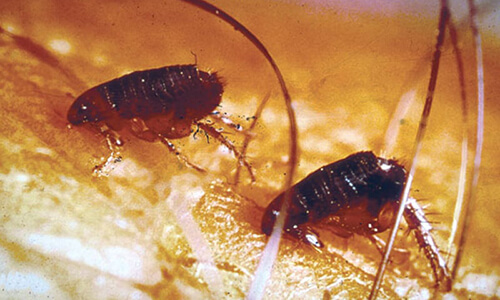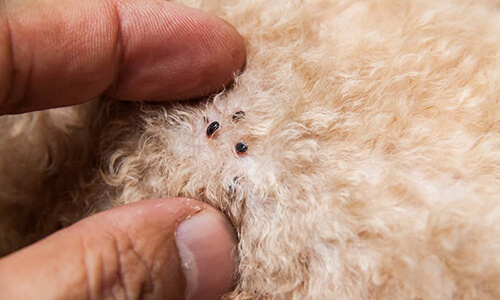

Fleas have the ability to reproduce quickly, which makes flea infestations very difficult to control. In fact, fleas can produce as many as 400 to 500 offspring in their lifetime. A veterinarian can recommend the best methods and products for treating fleas on your pet. However, if you discover fleas in your home, it’s important to contact Capitol Exterminating immediately.
What does a flea look like?
Fleas are small, wingless, flat insects with three pairs of legs. Adult fleas are about 1/8 of an inch long (1 to 3 mm). They are dark reddish-brown in color and have biting mouthparts. They can be very hard to spot because they move so fast along the animal’s body. Flea-combs and wetting an animal’s hair can help you grasp them for a visual inspection.
What do fleas eat?
Fleas feed on any warm-blooded body, including humans. However, they prefer to dine on hairy animals such as dogs, cats, rabbits, rats, mice, opossums, raccoons and skunks.
Where do fleas live?
Once a flea hatches and becomes an adult, it uses its powerful legs to jump onto a host, where it likely remains at all times. While attached, the flea will feed, mate and lay eggs. The eggs often fall off of the host into the yard, bedding, carpeting or blankets.
Are fleas dangerous?
Fleas not only cause discomfort from biting, but they are also vectors of the bubonic plague. While there are few cases reported today, this rare disease wiped out one-third of Europe in the 14th century. Additionally, they can spread the bacterial disease murine typhus, which is transmitted to humans through infected rats. In pets, fleas serve as an intermediate host for tapeworm. The saliva of these biting pests is known to cause serious flea allergy dermatitis in dogs and cats.
How can I prevent a flea infestation?
There are a few tips that people should follow to prevent fleas from becoming an itchy nuisance.
Around the House
- Maintain a clean home. Practicing good sanitation is key to avoiding an infestation.
- Vacuum carpets, floors and furniture frequently, and wash ben linens regularly, to remove any existing fleas and help prevent the laying of eggs.
- Since fleas can transport themselves on rodents, it’s important to eliminate any rodent harborage points by keeping the lawn properly landscaped. This includes mowing the lawn on a regular basis, replacing loose mortar and weather stripping around the basement foundation and windows, and removing all moisture sites around the property.
Also make sure to check pets’ coats thoroughly for fleas, especially after spending time outdoors. Be aware of excessive scratching and licking.




